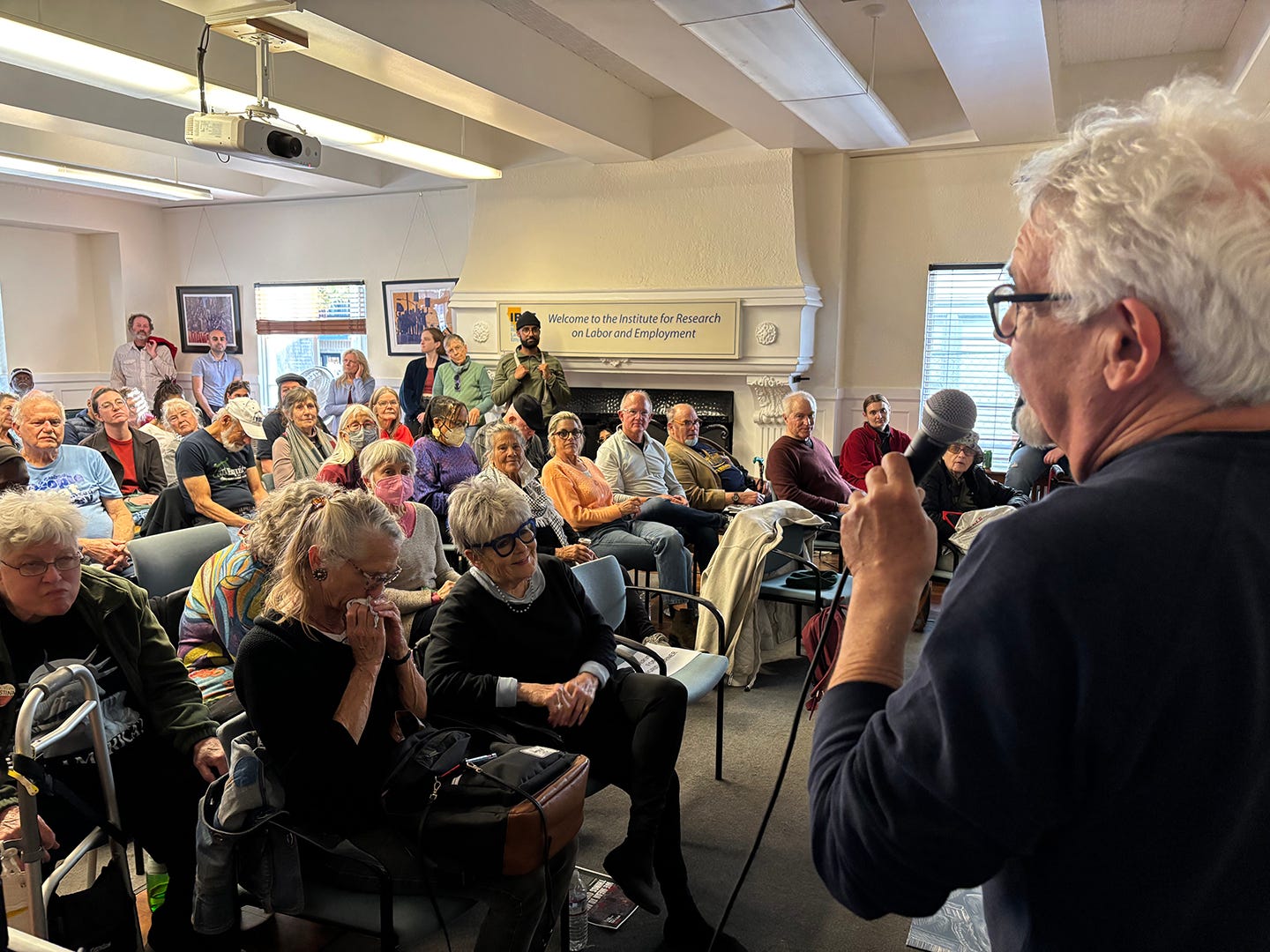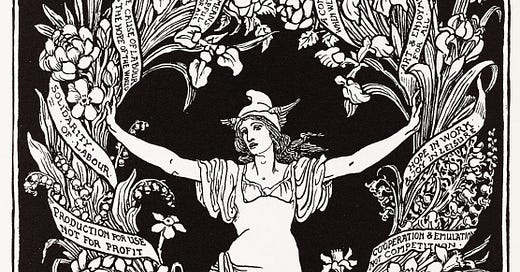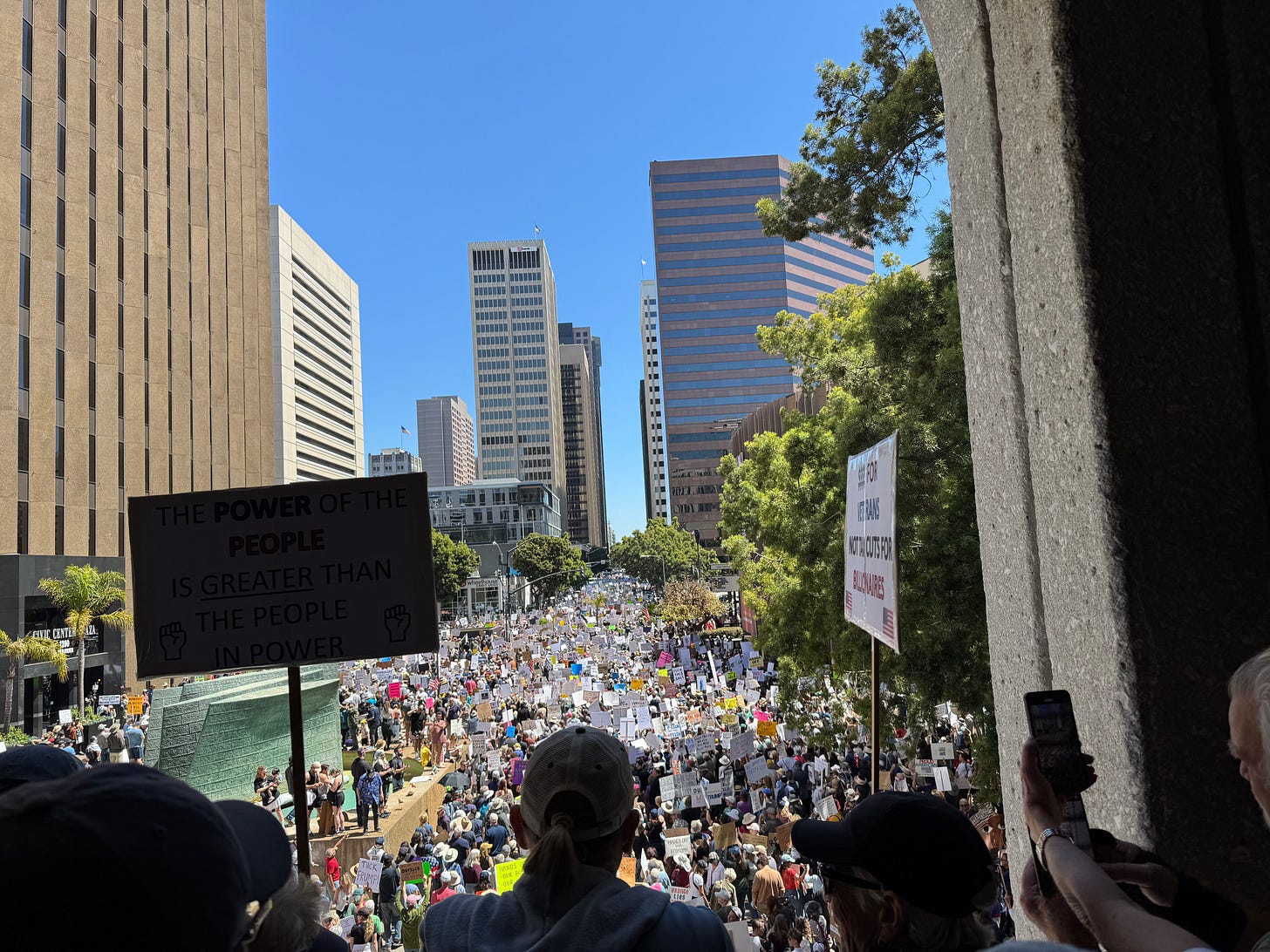May Day, General Strikes, and Labor Ramping Up
"April 5 has shown us that the generalized anger in the population—one of the preconditions for a general strike—is growing daily . . ."
By Fred Glass
In the wake of the encouraging turnout for the April 5 demonstrations across the nation, and heading toward May Day, it might be helpful to reflect on this worker holiday celebrated in scores of countries around the world, but officially not in the nation where the events occurred that inspired it.
The May Day holiday is historically associated with a few positive ideas: it honors workers; it’s about winning the eight-hour work-day; it’s about collective action, including general strikes, to achieve these goals; and especially, as an international holiday, it’s about immigrant worker rights.
May Day is also connected with a few negative associations: employer resistance to worker needs and demands; xenophobic attacks on immigrant workers to divide and conquer the working class; and the nation’s first red scare, and consequent efforts by American authorities to make the holiday seem frightening, especially during the Cold War.
The last part is especially relevant today. We approach May Day 2025 under the shadow of a gathering fascism. I saw an article in Jacobin last week arguing that we shouldn’t call the Trump administration fascist; yes, it’s bad, but it’s not fascist; it’s only going to alienate people to say that; and historical analogies are often wrong.
I disagree. Fascism is not about historical analogy with Germany or Italy in the 1930s. It’s about clearly recognizing what’s happening now: the assault on civil liberties for marginalized groups, especially immigrants; white nationalist grievance, including xenophobia, misogyny, and racism; dismantling the helping agencies of government; the freeing of violent right wing insurrectionists from prison, portending what’s to come; attacks on free speech in universities, on the justice system, on the media; and now the attempted destruction of collective bargaining rights for the federal workforce. If this doesn’t add up to fascism, I don’t know what does. And it will get worse if it doesn’t get stopped.
May Day has something to say about all this, including the fact that most countries that recognized the holiday didn’t do so from above, but due to workers’ institutions pushing from below, including through general strikes. (In my last Jumping Off Place column I noted that there are four conditions that must be fulfilled to have a general strike: a generalized anger in the working class; the structure to organize it; a leadership willing to call it; and a spark.)
Shawn Fain is the first national labor leader in more than a generation to issue a credible call to organize a general strike. Anyone can call a general strike; many do. No general strike follows. The call to organize a general strike must occur under conditions that make it possible. Fain said that all unions should line up their contracts to expire together on May 1, 2028.
Fain issued his challenge a year before Trump was elected. The condition of the working class—especially the density of unions in the workforce—has been deteriorating for decades under Republicans and Democrats alike. So he was essentially saying workers need to assert some direct control over their lives. We didn’t get the rights that are crumbling now, under assault by fascist billionaires, by being meek and asking for them, pretty please. We got them by organizing, by matching power for workers against the power of capitalists. We’ve been losing those rights by forgetting how to act together in our own interests as a class.
There’s nothing like a dose of fascism to concentrate the mind of workers’ organizations. At the biannual convention a couple weeks ago of my union, the California Federation of Teachers, we unanimously passed a resolution forming a committee to figure out how we line up our local contracts around the state to expire on May 1, 2028, and use other events along the way to build the power of that moment. The CFT has been in existence for over a century. We’ve never passed a resolution like this one before, and CFT is not alone in doing this now.
I wouldn’t say that this is an ideal situation. The other side holds most of the cards. But we can take heart from the fact that this was true in the 1930s and 40s when most of the general strikes in our history occurred. In some respects the most impressive was the 1934 San Francisco General Strike.
The San Francisco General Strike grew out of a west coast-wide strike of forty thousand maritime workers who were protesting intolerable working conditions and unlivable wages. The spark came with two strikers, Howard Sperry and Nick Bordoise being murdered on the picket line by police. Then sixty-four unions affiliated with the San Francisco Labor Council voted for a general strike.
After a dramatic silent funeral march up Market Street, no one went to work in San Francisco for four days. Two things resulted. The direct impact was that maritime workers got hiring halls they controlled, their unions were recognized by the employers, they received substantial wage increases, and were able to gain a modicum of economic security.
The other thing was its national impact. The San Francisco General Strike, and others like it that year in Toledo Ohio and Minneapolis Minnesota, forced Congress to pass the National Labor Relations Act, a year to the day after Sperry and Bordoise were gunned down, creating for the first time national rules of the game for unions and collective bargaining, which allowed for peaceful conflict resolution in the workplace, and encouraged union organizing on a grand scale.
Despite the good news that some in labor are beginning to organize responsibly toward a general strike I wouldn’t say that we’re ready for one quite yet. Organized labor, with just ten percent of the workforce enrolled in unions, needs to build on the forward momentum of the past several years. It needs to invest more in internal education, in building coalitions with community groups, and especially in organizing new workplaces. With anti-labor ideologues in charge of the nation’s federal agencies, including the National Labor Relations Board and the Department of Labor, this will be a lift. We are caught between the need to match the speed of the Trump administration as it shreds worker rights and institutions and the need to take the time to prepare properly for large scale action.
April 5 has shown us that the generalized anger in the population—one of the preconditions for a general strike—is growing daily as Trump and Musk et. al. perform their steel-toed dance on our heads.
Unions are more popular with the public than in half a century because a number have been growing more militant. When we fight we win, and the public loves an underdog winner. We’ve had more strikes in the past several years than we’ve seen in decades. General strikes don’t arise in a vacuum; they tend to occur as the crest of a strike wave.

May Day—deliberately associated by employers and the right wing in their propaganda with violent anarchism and then Communism for nearly a century and a half, and therefore shunned by organized labor—is now being embraced by a coalition of labor and the left. Last week the UC Berkeley Labor Center sponsored a screening of my 2022 half hour documentary video, We Mean to Make Things Over: A History of May Day. An overflow crowd attended. The event was cosponsored by the Alameda Labor Council, the academic workers union in the UC system, UAW Local 4811, and local DSA chapters. The discussion afterward revolved around whether it’s possible to move up Shawn Fain’s target date, and information about organizing upcoming demonstrations, including on May Day.
For decades few in American labor would touch this holiday with a ten-foot pole. Now it’s understood, once more, as a platform for united action for our rights. Last Saturday witnessed the largest demonstrations yet against what the fascist billionaires are doing to us. But with any luck, and the right organizing, that might turn out to be but a stepping-stone toward even larger gatherings on May first.
We Mean To Make Things Over can be streamed for free here. I encourage readers to put out some milk and cookies, organize screenings for your co-workers, friends and neighbors, and come out on May first to your local rallies.
Fred Glass is a member of East Bay DSA, the former communications director of the California Federation of Teachers, and the author of From Mission to Microchip: A History of the California Labor Movement (UC Press, 2016).




